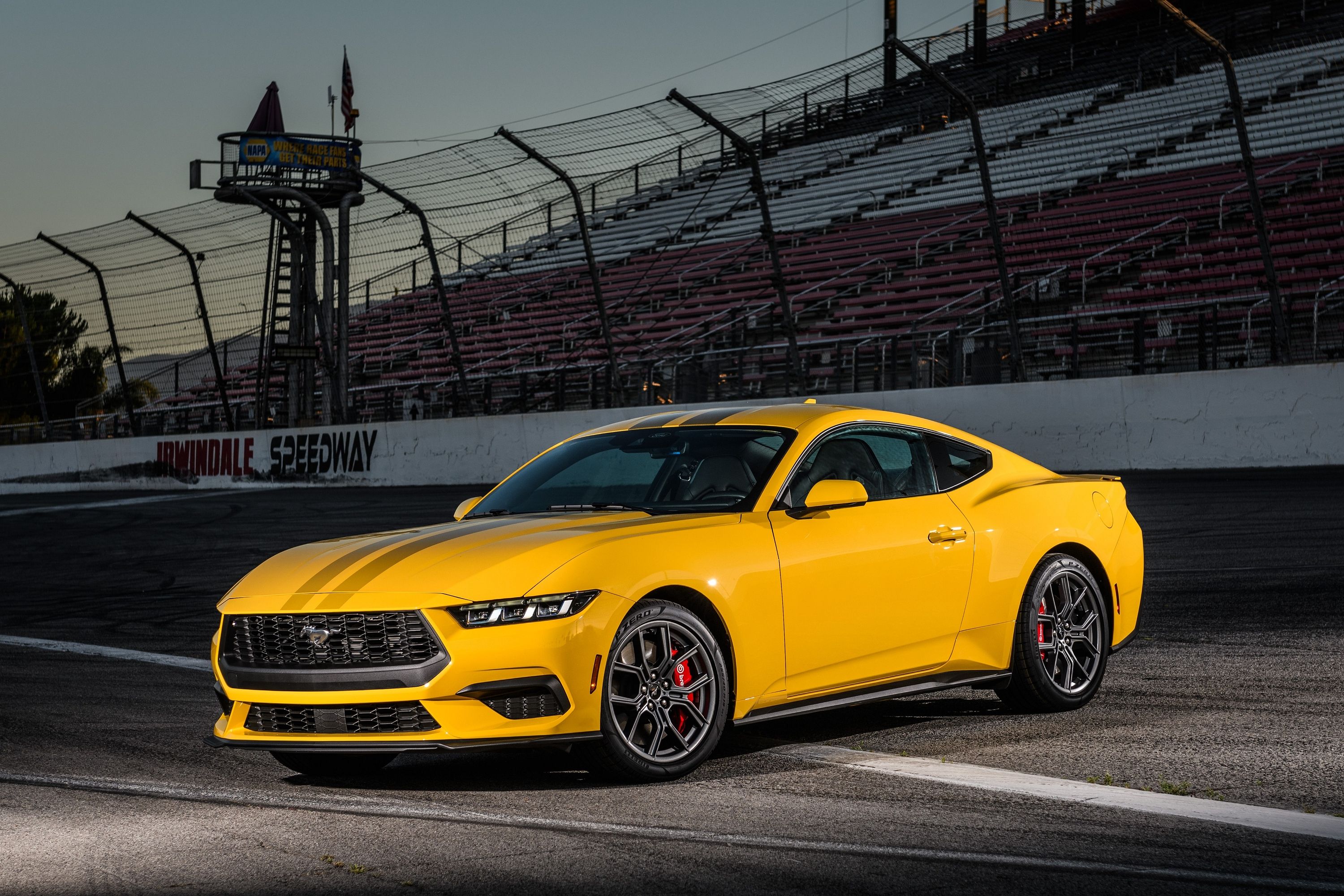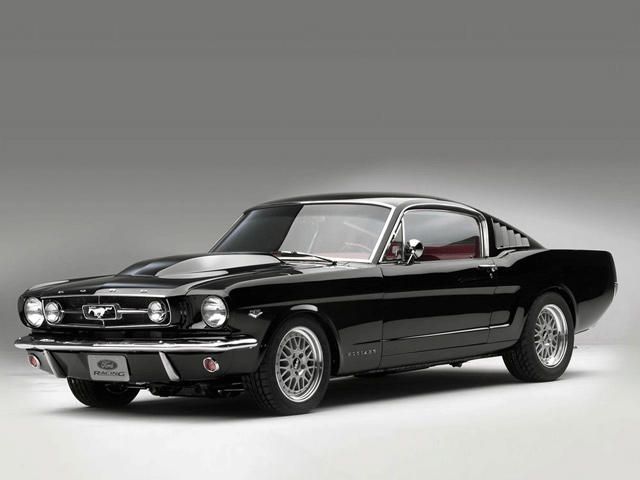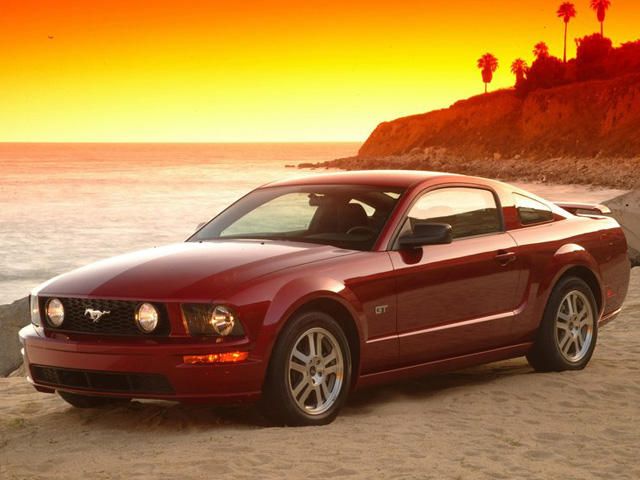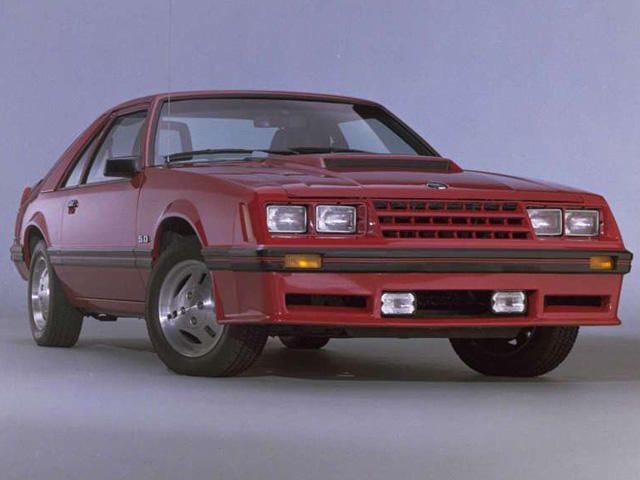
The Mustang defined what the pony car would be. Its instantly iconic body shape, the "long hood, short deck, open mouth" look, has defined what a pony car must look like ever since the first 1964 1/2 models rolled out. The formula has been a huge success, both for pony cars in general and all the more so for the Mustang itself, as it is the only pony car to have enjoyed an uninterrupted 48-year production run. Even more than just defining the looks of the niche, the Mustang established other rules for pony cars.
They have to be affordable, or at least have an affordable base price, and optioning up from the V6 to the V8 can't be prohibitively expensive. Pony cars are kept relatively simple, as a means of keeping the price down, although newer models have made huge improvements in the handling department when compared to the 60's and 70's originals, which tended to only be able to go fast in a straight line. Lastly, a pony car is one aimed at young buyers, both with the pricing and the advertising. Difficult though it may be to imagine, the Mustang was originally conceived as a two-seat mid-engine roadster, with a four-cylinder engine.
Ford ultimately scrapped the idea when it was realized that the two-seat original version of the Thunderbird, pretty though they were, hadn't been big sellers. The Mustang intended to be a much more mass-market vehicle, and the only hint of the original design to survive the transition to 2+2 fastback were the air intakes located in front of the rear wheels. These intakes have always been purely ornamental on production Mustangs, but it is without question that they give the car a look entirely its own. The Mustang was such a huge success that Ford hit their projected annual sales target of 100,000 units in the first three month that the car was out.
They ended up having to build more than 300,000 additional units just to meet demand in the first year, something they were only able to achieve because of how liberally the Mustang borrowed from Ford's parts bin. The Mustang was always available with a V6, and there have been a large number of higher-performance models over the years, such as the Boss, SVT and Shelby variants. But the true original pony car was the 289 V8 in the original body style. Starting in 1967, the Mustang saw several size increases, culminating in the bloated 1971-73 models, which were so much larger and heavier that buyers who wanted speed began to look elsewhere.
This lead to a major redesign in 1974, the beginning of the era of the Mustang II. Though this new Mustang was once again small, it was still heavy, a problem exacerbated by the fact that there wasn't even a V8 offered in the first year of production. Sales weren't as bad as you might expect, but Ford still recognized that the Mustang II had been a misstep, and 1979 saw yet another redesign. For the third generation of the Mustang, Ford dropped the numbering system and went back to calling the car Mustang. This was the "Fox body" Mustang, and Ford had finally made the car light again.
The car got a major facelift in 1987 and stayed in production until 1993, the longest production run of any generation of the Mustang. The light weight body combined with the new 5.0-liter V8 made for quite a quick car, and 5.0 Mustangs have become collector's items. It was this generation which also saw the introduction of the Cobra R, a factory-built drag car available for sale right from Ford. For 1994, and the thirtieth anniversary of the Mustang, Ford rolled out a completely new design, one which is an early example of the "retro" automotive design trend.
The new design did an admirable job of evoking the spirit of the '64 1/2 models, and a facelift in 1999 sharpened up the lines and gave the car a look that was both modern and retro. This idea was carried over into the current generation, in production since 2005, which calls on the 1967 body style for inspiration. These new Mustangs, in GT trim, started out with a 300-horsepower 4.6-liter V8, a holdover from the previous generation. But for 2011, Ford brought out a new 5.0-liter V8 for the GT, which produces 412 horsepower. There is also a 305-horsepower V6, a Boss version with a tuned 5.0 and a Shelby Mustang, which puts out an astonishing 662 horsepower.
This is all very impressive, but it is once again the GT, with its 5.0 V8 that is the true pony car. The Mustang has gone through some rough patches, and some periods where you couldn't even really call it a pony car, but the Mustang has returned to form, and it once again offers that excellent mix of performance and affordability. Sales may not be what they once were, and we're told that the V8 might not be around too much longer, but for the time being, the Mustang is once again the standard by which all other pony cars are judged.



